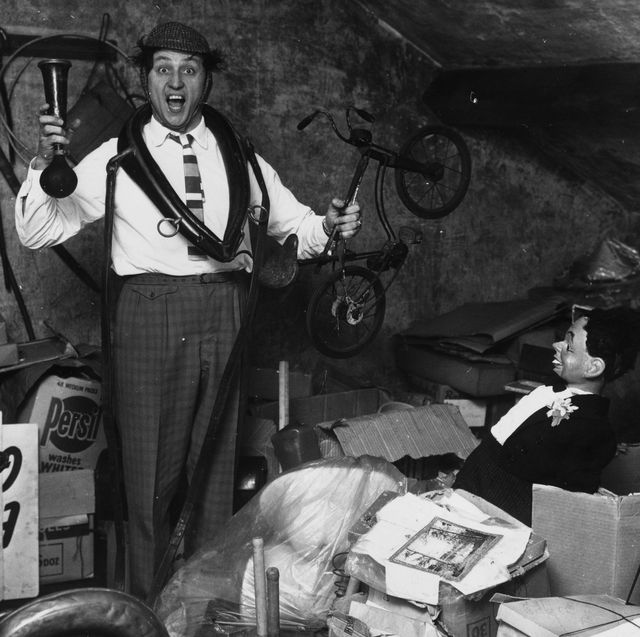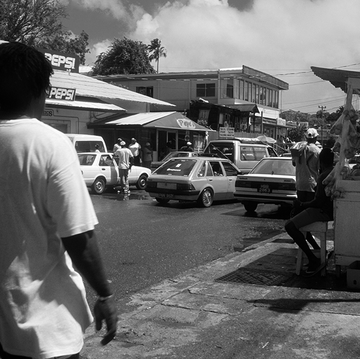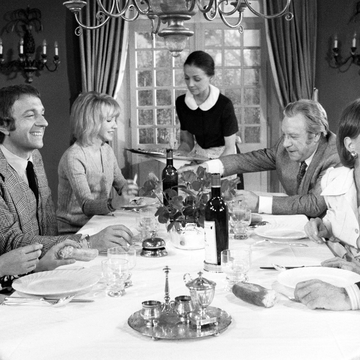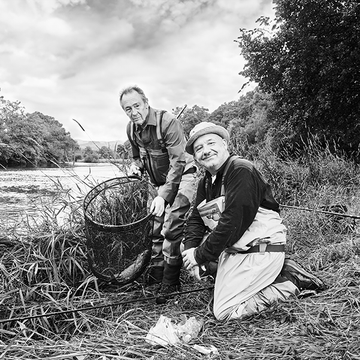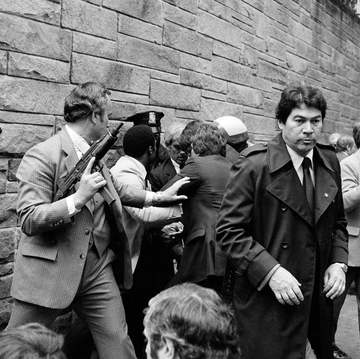While the first two floors of our south-London Victorian terrace house were modern and spare, we were living a lie. Directly above our clutter-free bedroom, the floorboards in the loft heaved under a mountain of accumulated possessions. The more minimalist our lives below appeared, the more nightmare “the pile”, as we had come to call it, became. We were in an interiors version of The Picture of Dorian Gray.
It was one of those lofts where you pushed a stick against a catch in the ceiling and a step ladder would slide down through the trapdoor. When we first moved in, we organised it into sections. Christmas decorations. Summer clothes. Sports stuff. It was bleak but tidy, like the stock room of a rural department store.
Over the years, the sheer weight of goods coming in began to put a heavy strain on the system. I didn't identify as a hoarder; in fact, I kind of pitied those men my age with rooms full of vinyl and old magazines. Still, with the loft at our disposal, why wouldn't we hang onto it? Up the stairs I would take it. Books, clothes, gadgets, random freebies from work. To the safe place.
If we ever needed to find anything up there – an obscure cable, perhaps, or a pétanque set – it required similar preparation to a caving trip, making sure to tell someone you were going up in case you weren't back by nightfall.
The presence of the pile was difficult for Clare, who has been known to throw out chicken from the fridge a day before the use-by date because it was “close enough".
In a sense, then, the loft was a clash of ideologies. There would be talk of clear-outs, of course. Occasionally bags came down to be edited. There had long been a one-in-one-out decree on all clothing items. But still the pile grew. Clare once caught me teetering on the ladder stairs, trying to force a toboggan into the black hole beyond.
It was around this time that the idea of converting the loft began to pick up speed. In East Dulwich, you're never more than a few metres from a conversation about loft conversions. Now, these conversations had begun to happen inside our house as well. Soon it became the only conversation. Any silences were heavy with the awareness that we weren't talking about having the loft done but would be soon.
I played devil's advocate for a while, but it carried the inevitability of HS2. Things moved faster than I thought. A man came with contracts and a starting date. The have a sunny, modern living space above us was tantalising but also hard to imagine. The pile wouldn't clear itself. In just a few weeks, almost everything up there had to go.
Someone suggested I watch a Netflix show presented by a pair who call themselves “The Minimalists” as preparation. Instead of offering practical advice, it seemed to be more of a movement for middle-aged men who could no longer find work in advertising.
Right up my street, in theory, yet despite the apparent joy they had found unburdening themselves of their possessions, The Minimalists seemed to take themselves quite seriously. They also seemed to produce a lot of stuff of their own. The latest episode of their podcast, in which they waxed on about the benefits of pared-down living, was number 390.
Across the internet there were big claims being made for a minimalist lifestyle, from saving the planet to spiritual cleansing, even reconnecting with community. Unless they meant getting to know the guys at the dump, it wasn't always easy to connect the dots.
While I didn't have time for metaphysical arguments, I did need a credo of sorts before I climbed the step ladder. A previous skirmish with Marie Kondo in which I'd lost a beloved pair of Ralph Lauren shorts meant her “spark joy” technique was out.
The Buddhists and Stoics, meanwhile, with their distrust of attachments in general, would never have got themselves in this predicament in the first place. Something called the Swedish Death Cleaning method I'd stumbled upon appeared to be gaining ground but was far too creepy to explore.
For some reason, I kept thinking of that line from Robert De Niro's character in Heat: “Don't let yourself get attached to anything you are not willing to walk out on in 30 seconds flat if you feel the heat around the corner."
Yes, he was a sociopathic career criminal, and this approach was largely to evade law enforcement, but there was something attractive about this ruthlessness that I needed to channel.
In my case, the heat was the scaffolders who were booked in for Friday week. The vision of his goateed face helped me tackle stage one of the clear. I started with the low-hanging fruit. The 10-litre water bottles bought during the first weeks of lockdown. The two boxes of unidentified wires for gadgets that had long since died. The mystery planks of wood found in any loft or attic the world over.
The more I dug, though, the nicer things got. Would De Niro hang on to these unworn limited-edition Umbro football boots? Or this Steven Meisel 2015 Pirelli Calendar? Not likely.
A lot of it screamed eBay or Vinted, butI decided that any revenues could never makeup for the time I’d lose in the post-office queue.Far better to press them onto a friend or family member who might even feel indebted to me down the line.
Through another layer, I emerged into a clearing of sorts. Here was the mother lode: clothes. Bags and bags of them. Scarily, these were the survivors of several previous culls. This was the good stuff.
I took them downstairs and laid them out in sections. Fifty-six shirts, 41 pairs of trousers, 39suit jackets, 23 coats, 43 football tops, 63 ties. I didn’t even wear ties.
It was shocking in lots of ways. Not least that almost every item could take me straight back to the place and time when I wore it. A brown Duffer of St George shirt with sky-blue check and extreme cutaway collar: I wore it to the Sun & 13 Cantons pub in Soho on our first date. We ordered two halves of Guinness on St Patrick’s Day.
A Bill Amberg leather briefcase with a green felt lining that marked my status as a young professional but was now creased and worn, with one handle about to give way.
A Burberry military coat bought in a sample sale; I can still remember the excitement I felt in the queue to pay. The red lining was now ripped and the navy wool faded from too many dry cleans.
I knew only a fraction of these could survive the build. My instinct was to stuff them in some corner of the house. But were they really worth saving? Was this the paraphernalia of a life well-lived or the leftovers of someone else’s?
That week, I happened to be listening to a serialisation of Michael Caine’s autobiography. “Don’t look back, you’ll trip over,” he says, towards the end. An appropriate sentiment, as recycling bags now filled the hallway.
The final hurdle was my MiniDisc selection. I’d gone all in on MiniDiscs. Separates, portable players, even a purpose-built cabinet to index them in. Just the action of opening and closing the portable player took me back to being 24, but only for a second. It was clear to me now that this was, in fact, someone else’s stuff. That he wasn’t me anymore.
To drop the last bags off at St Christopher’s Hospice Shop was a small act of transcendence. I backed out of there, partly because I wanted some kind of acknowledgement from the volunteer on duty and partly because I considered lunging for my stuff and legging it. A hand came from behind the doorway and threw the bags onto a giant pile beyond.
I walked home as a man who no longer needed a selection of going-out shirts, and who now employed builders to perform works upon his house. I’d left my youth behind in the charity shops of Lordship Lane.
Will Hersey is a contributing editor to Esquire
